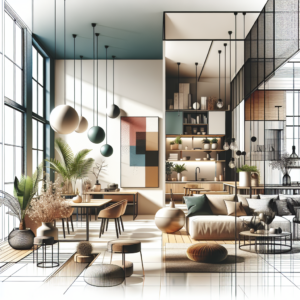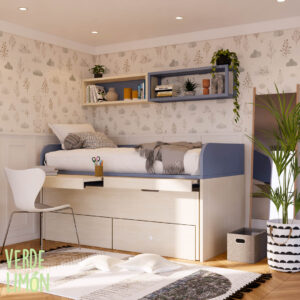The trend of rustic kitchens has gained strength in interior design, offering a cozy environment that balances functionality and aesthetics. With an increasing number of people adopting this style, essential keys have been identified to create decorations that are both harmonious and full of character. Design experts have pointed out several fundamental elements that allow for personalization and beautification of this crucial space in the home.
One of the most important aspects is the choice of materials. Wood becomes the undisputed protagonist of rustic kitchens. Solid wood furniture, both in cabinets and countertops, add authenticity and warmth to the environment. Woods that have natural tones, with grains and knots, provide an incomparable touch of rusticity. Aged finishes are particularly effective in evoking a sense of tradition and connection to the past.
Earth tones play a fundamental role in the palette of these spaces. Warm tones like beige, brown, olive green, and stone gray are ideal for creating a cozy atmosphere. These colors can be applied to walls, tiles, or decorative elements, contributing to a harmonious ambiance. In addition, textiles with checkered or floral patterns complement wood furniture perfectly, enhancing the country essence.
Lighting also plays a prominent role in the design of rustic kitchens. Although natural light is ideal, large windows are a luxury that is not always possible. In these cases, it is recommended to use vintage-style lamps, such as wrought iron or glass, that add a classic and warm touch to the space. The combination of direct and indirect lights allows for creating different atmospheres according to the needs, favoring both functionality and comfort.
On the other hand, the incorporation of decorative elements is equally vital. Antique kitchen utensils, artisanal ceramics, wicker baskets, and aromatic plants contribute to bringing life and dynamism to the space. These details not only serve a decorative function but also evoke memories and connect with rural culture, turning the kitchen into a place celebrating tradition.
Finally, the distribution of space cannot be neglected. A rustic kitchen should be both functional and cozy, favoring family interaction. The inclusion of an island or a kitchen bar with wooden stools can transform the area into the heart of the home, inviting family and friends to share moments together.
In summary, achieving a rustic style in the kitchen requires a careful selection of materials, colors, lighting, decorative elements, and an effective distribution of space. By following these guidelines, any home has the opportunity to transform its kitchen into a warm and welcoming place, where tradition and modernity merge. The rustic trend continues to be a timeless option that invites to enjoy everyday life in a pleasant and character-filled environment.
Source: MiMub in Spanish











